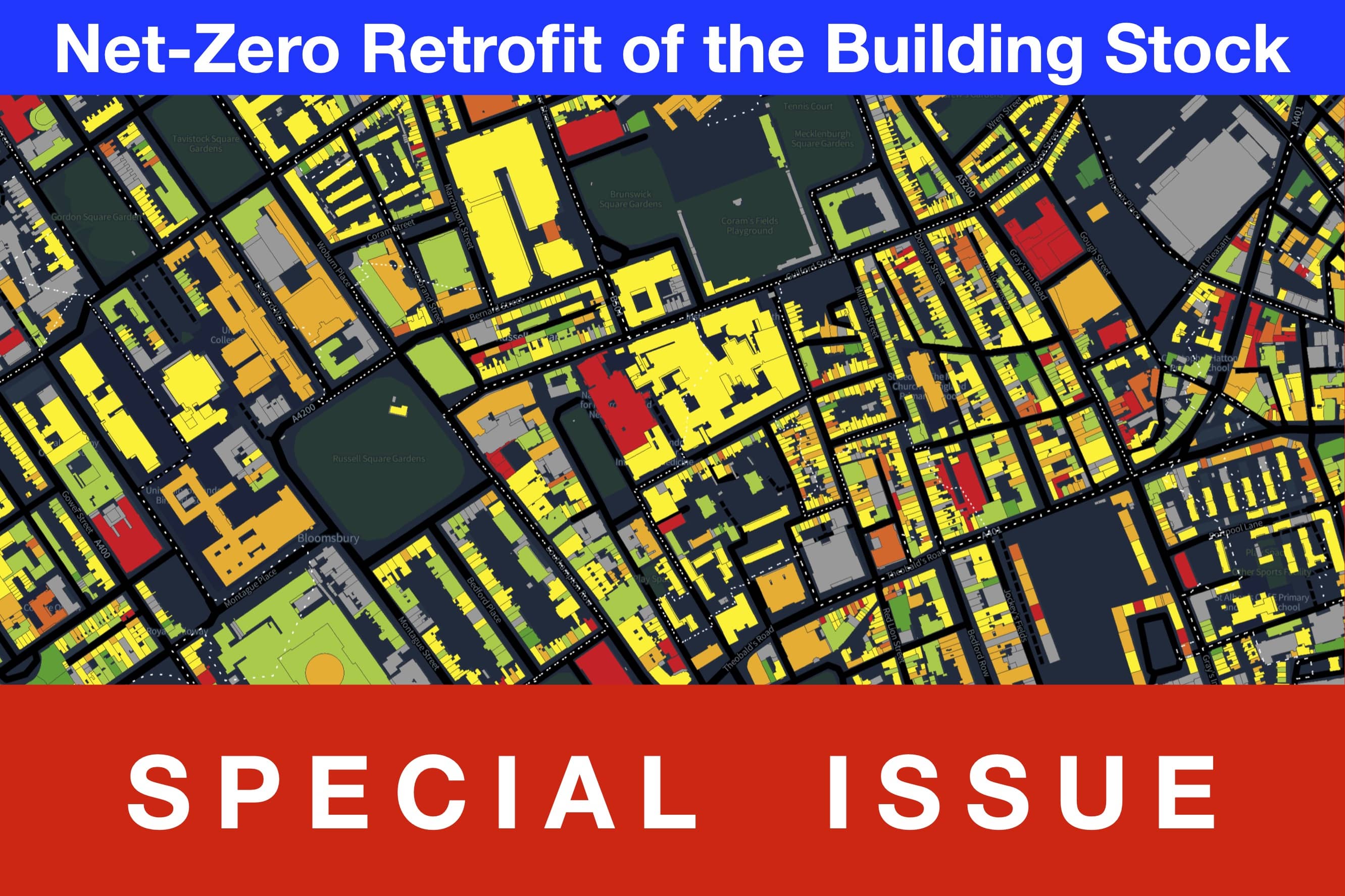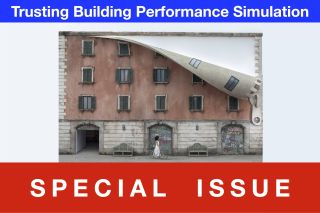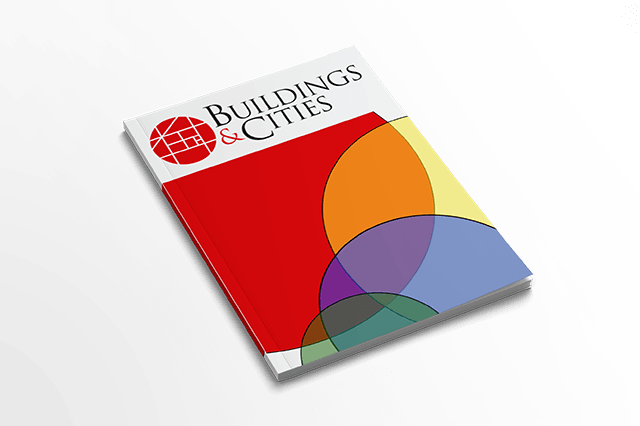
www.buildingsandcities.org/journal-content/special-issues/net-zero-retrofit-building-stock-si.html
Net-Zero Retrofit of the Building Stock

How might the building stock transition towards net zero? How big a change is achievable? What factors determine both the overall potential as well as the transition process?
This special issue explores how the building stock might transition towards net zero, and what key theoretical and practical factors are going to determine the overall potential and shape the transition process. Papers address both the technical and socio-economic questions around retrofit potential, exploring the drivers and barriers to greater uptake of retrofits, and how policy, knowledge-sharing and more concerted engagement between stakeholders could be used to improve the rate of uptake needed to meet the long-term emissions reduction targets.
Guest editors: Daniel Godoy-Shimizu and Philip Steadman
Despite a wide range of academic backgrounds, timeframes, geographical contexts, and types and scales of retrofits, common threads arise in this special issue. These include the need for consistent long-term policy, with a greater focus on public engagement and a collaborative approach across stakeholders, and increased provision of reliable, open, consistent advice based on trustworthy data.
Taken as a whole, these papers illustrate what a monumental task it will be to turn the long-term building retrofit goals from ambitious words into successful actions. Tripling energy retrofits and on-site renewables by 2030, as well as reducing demand and improving performance, will require increased collaboration across a wide range of institutions and disciplines. Given the scale of the task, the issues raised in this special issue will all need to be addressed, through research, policy and practice, in order to efficiently transition the global built environment towards net zero.
Urban stock models have primarily focused on evaluating the energy or emissions pathways towards net zero, often treating occupant behaviour using simple, fixed assumptions or rules. Instead, the challenges for research, policy and practice will be to engage with the complex dynamics that influence how building users choose to install retrofits, for example, or modelling how public engagement might work and change over time.
Table of Contents
Net-zero retrofit of the building stock [editorial]
D. Godoy-Shimizu & P. Steadman
Local area energy mapping approach for high-density heat pump deployment
R. Gupta, M. Gregg & C. Liu
HVAC characterisation of existing Canadian buildings for decarbonisation retrofit identification
J. Adebisi & J. J. McArthur
A systemic decision-making model for energy retrofits
C. Schünemann, M. Dshemuchadse & S. Scherbaum
Market transformations: gas conversion as a blueprint for net zero retrofit
A. Gillich
Beyond the building: governance challenges in social housing retrofit
H. Charles
Learning to sail a building: a people-first approach to retrofit
B. Bordass, R. Pender, K. Steele & A. Graham
A strategic niche management framework to scale deep energy retrofits
T. H. King & M. Jemtrud
Preserving buildings: emission reductions from circular economy strategies in Austria
N. Alaux, V. Kulmer, J. Vogel & A. Passer
Implementing and operating net zero buildings in South Africa
R. Terblanche, C. May & J. Steward
Latest Peer-Reviewed Journal Content
Net zero retrofit of the building stock [editorial]
D Godoy-Shimizu & P Steadman
Co-learning in living labs: nurturing civic agency and resilience
A Belfield
The importance of multi-roles and code-switching in living labs
H Noller & A Tarik
Researchers’ shifting roles in living labs for knowledge co-production
C-C Dobre & G Faldi
Increasing civic resilience in urban living labs: city authorities’ roles
E Alatalo, M Laine & M Kyrönviita
Co-curation as civic practice in community engagement
Z Li, M Sunikka-Blank, R Purohit & F Samuel
Preserving buildings: emission reductions from circular economy strategies in Austria
N Alaux, V Kulmer, J Vogel & A Passer
Urban living labs: relationality between institutions and local circularity
P Palo, M Adelfio, J Lundin & E Brandão
Living labs: epistemic modelling, temporariness and land value
J Clossick, T Khonsari & U Steven
Co-creating interventions to prevent mosquito-borne disease transmission in hospitals
O Sloan Wood, E Lupenza, D M Agnello, J B Knudsen, M Msellem, K L Schiøler & F Saleh
Circularity at the neighbourhood scale: co-creative living lab lessons
J Honsa, A Versele, T Van de Kerckhove & C Piccardo
Positive energy districts and energy communities: how living labs create value
E Malakhatka, O Shafqat, A Sandoff & L Thuvander
Built environment governance and professionalism: the end of laissez-faire (again)
S Foxell
Co-creating justice in housing energy transitions through energy living labs
D Ricci, C Leiwakabessy, S van Wieringen, P de Koning & T Konstantinou
HVAC characterisation of existing Canadian buildings for decarbonisation retrofit identification
J Adebisi & J J McArthur
Simulation and the building performance gap [editorial]
M Donn
Developing criteria for effective building-sector commitments in nationally determined contributions
P Graham, K McFarlane & M Taheri
Reimagining circularity: actions for optimising the use of existing buildings
R Lundgren, R Kyrö, S Toivonen & L Tähtinen
Effective interdisciplinary stakeholder engagement in net zero building design
S Vakeva-Baird, F Tahmasebi, JJ Williams & D Mumovic
Metrics for building component disassembly potential: a practical framework
H Järvelä, A Lehto, T Pirilä & M Kuittinen
The unfitness of dwellings: why spatial and conceptual boundaries matter
E Nisonen, D Milián Bernal & S Pelsmakers
Environmental variables and air quality: implications for planning and public health
H Itzhak-Ben-Shalom, T Saroglou, V Multanen, A Vanunu, A Karnieli, D Katoshevski, N Davidovitch & I A Meir
Exploring diverse drivers behind hybrid heating solutions
S Kilpeläinen, S Pelsmakers, R Castaño-Rosa & M-S Miettinen
Urban rooms and the expanded ecology of urban living labs
E Akbil & C Butterworth
Living with extreme heat: perceptions and experiences
L King & C Demski
A systemic decision-making model for energy retrofits
C Schünemann, M Dshemuchadse & S Scherbaum
Modelling site-specific outdoor temperature for buildings in urban environments
K Cebrat, J Narożny, M Baborska-Narożny & M Smektała
Understanding shading through home-use experience, measurement and modelling
M Baborska-Narożny, K Bandurski, & M Grudzińska
Building performance simulation for sensemaking in architectural pedagogy
M Bohm
Beyond the building: governance challenges in social housing retrofit
H Charles
Heat stress in social housing districts: tree cover–built form interaction
C Lopez-Ordoñez, E Garcia-Nevado, H Coch & M Morganti
An observational analysis of shade-related pedestrian activity
M Levenson, D Pearlmutter & O Aleksandrowicz
Learning to sail a building: a people-first approach to retrofit
B Bordass, R Pender, K Steele & A Graham
Market transformations: gas conversion as a blueprint for net zero retrofit
A Gillich
Resistance against zero-emission neighbourhood infrastructuring: key lessons from Norway
T Berker & R Woods
Megatrends and weak signals shaping future real estate
S Toivonen
A strategic niche management framework to scale deep energy retrofits
T H King & M Jemtrud
Generative AI: reconfiguring supervision and doctoral research
P Boyd & D Harding
Exploring interactions between shading and view using visual difference prediction
S Wasilewski & M Andersen
How urban green infrastructure contributes to carbon neutrality [briefing note]
R Hautamäki, L Kulmala, M Ariluoma & L Järvi
Implementing and operating net zero buildings in South Africa
R Terblanche, C May & J Steward
Quantifying inter-dwelling air exchanges during fan pressurisation tests
D Glew, F Thomas, D Miles-Shenton & J Parker
Western Asian and Northern African residential building stocks: archetype analysis
S Akin, A Eghbali, C Nwagwu & E Hertwich
Join Our Community

The most important part of any journal is our people – readers, authors, reviewers, editorial board members and editors. You are cordially invited to join our community by joining our mailing list. We send out occasional emails about the journal – calls for papers, special issues, events and more.
We will not share your email with third parties. Read more


Latest Commentaries
Building-Related Research: New Context, New Challenges
Raymond J. Cole (University of British Columbia) reflects on the key challenges raised in the 34 commissioned essays for Buildings & Cities 5th anniversary. Not only are key research issues identified, but the consequences of changing contexts for conducting research and tailoring its influence on society are highlighted as key areas of action.
Lessons from Disaster Recovery: Build Better Before
Mary C. Comerio (University of California, Berkeley) explains why disaster recovery must begin well before a disaster occurs. The goal is to reduce the potential for damage beforehand by making housing delivery (e.g. capabilities and the physical, technical and institutional infrastructures) both more resilient and more capable of building back after disasters.